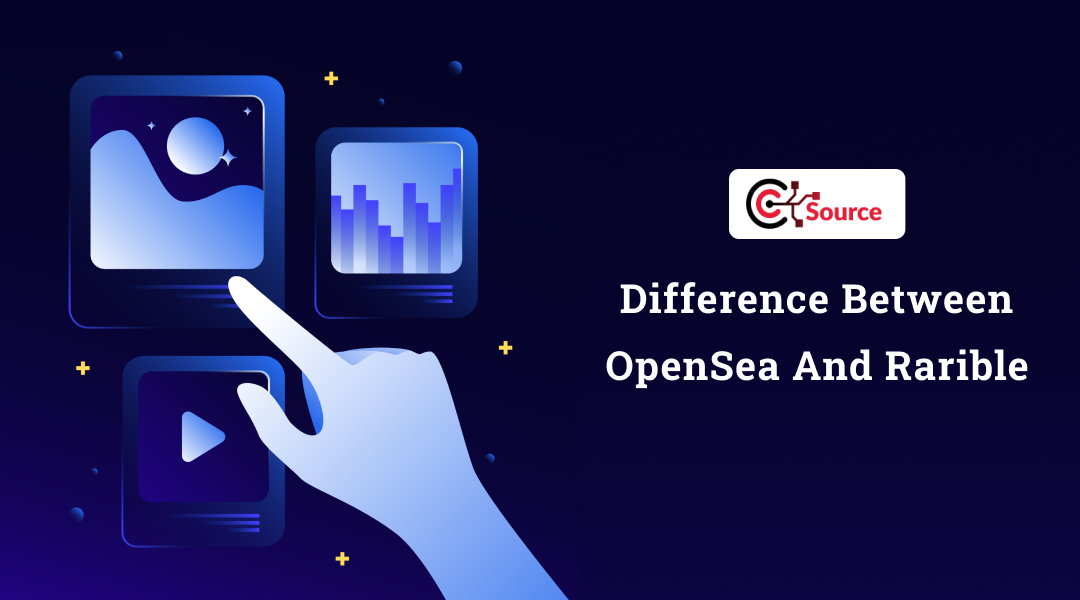The incredible innovations of non-fungible tokens (NFT) have facilitated the users with massive freedom for developing, transferring, and monetizing their creatives.
The main idea behind NFTs is focused on the possibility of developing, commercializing and owning distinct and non-transferable digital assets. Thus, the NFT marketplaces which provide the adequate tools essential to trade and create NFTs are imperative to the success of any NFT project.
Evidently, these marketplaces can be differentiated based on the openness of their platforms. On the one hand, some marketplaces selectively permit pre-approved artists to list or mint NFTs. On the other hand, there are more prominent alternatives with a more relaxed and inclusive policy regarding the selling and minting of NFTs. To elucidate it in simple terms, they allow any random person to list NFTs on their marketplaces.
This blog by ChainTechSource focuses on OpenSea and Rarible, which can be referred to as open markets because of their unrestrictive systems. This blog depicts a comprehensive comparison of the features and services of the two platforms.
What is OpenSea?
OpenSea can be determined as a peer-to-peer marketplace that can be customized for NFT users. More vividly, OpenSea offers the infrastructure that is essential for minting and trading NFTs. One of the supreme things about this platform is that it enables most of its operations on the blockchain. Decentralization also plays a prominent role in this platform because users do need an intermediary to indulge them while commercializing NFT-based digital items. Subsequently, the other evident aspect of OpenSea is its capability for streamlining the complicated procedures involved in managing and monetizing NFTs. There is no need for an individual to know how to code before creating an NFT in OpenSea, nor no need for any technical requirements for employing its trading interface. Basically, OpenSea is an ideal option for all the pioneers in the NFT world to create NFTs as it doesn’t demand any erroneous procedures and everything can be handled effortlessly enough to execute flexibly. Grabbing information from the past, it can be vividly elucidated that OpenSea evolved over the years from being a Cryptokitties-focused marketplace back in 2018 to becoming a flexible platform for a myriad of NFT collections and projects. The remarkable combination of seamless and dynamic services of OpenSea has vehemently escalated it into one of the NFT participant’s go-to marketplace.What is Rarible?
Rarible almost functions similar to OpenSea where users are offered a flexible and peer-to-peer gateway into The NFT frenzy. More importantly, it succors users to get an easy-to-use minting and trading featured rich platform that has been designed comprehensively for NFTs. Similar to OpenSea, Rarible also provides a flexible platform that can develop various digital items, including artworks, collectibles, in-game assets, and much more. Blockchain here also plays a major role as every transaction and trade executed on the platform are at once recorded on it. Thus, the combination of blockchain-powered trading infrastructure denies the need for intermediaries. Besides, Rarible possesses more significance in decentralization as, unlike OpenSea, the platform’s economy and governance are controlled by a native token called RARI. Interestingly, holders of RARI can automatically vote on policy alterations and can take other crucial decisions. However, this got canceled in January 2022 after the community unanimously voted to allocate the remaining RARI tokens to projects building on the Rarible protocol. OpenSea vs Rarible Now everyone will have got a fundamental knowledge about how Opensea and Rarible operate, let us compare the two based on their services and features.- Multi-blockchain Support
-
NFT Niche

